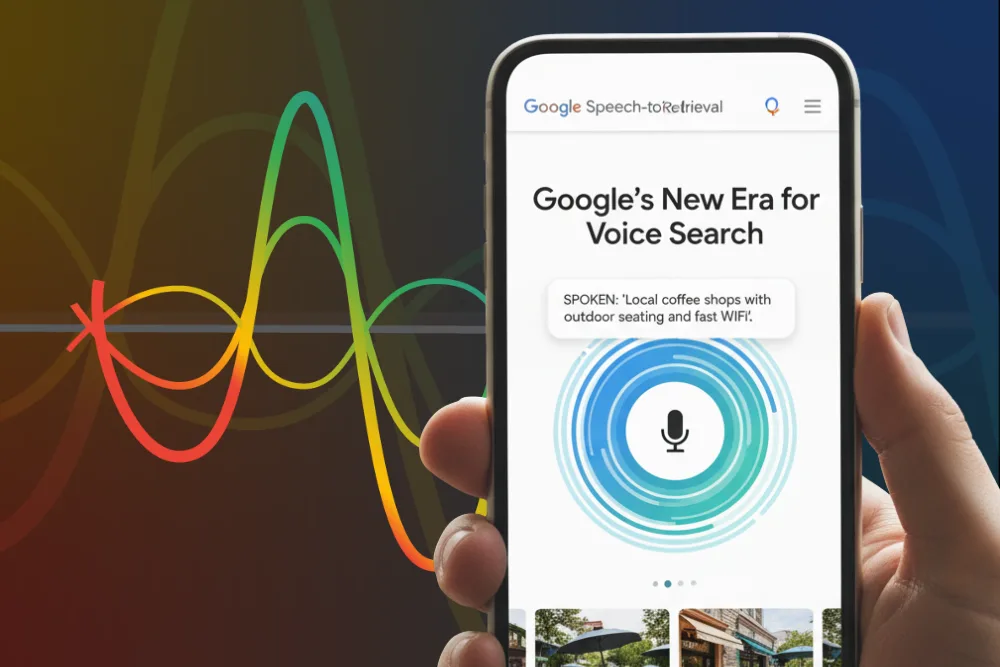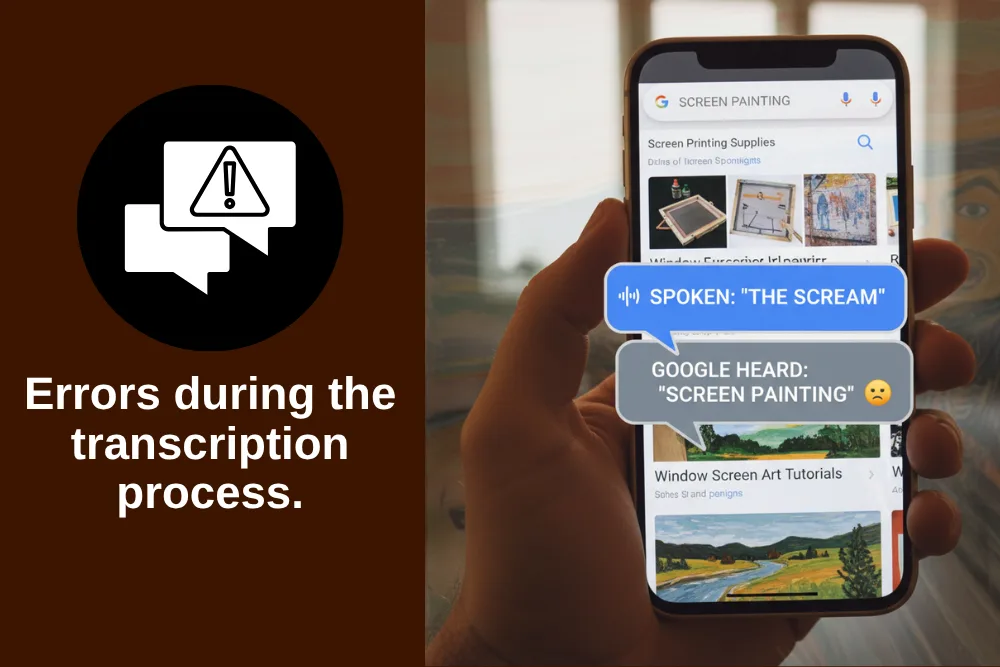Now Reading: Google’s New Era for Voice Search with Speech-to-Retrieval
-
01
Google’s New Era for Voice Search with Speech-to-Retrieval
Google’s New Era for Voice Search with Speech-to-Retrieval

Voice search has transformed the way users interact with technology. Google has taken a major leap forward with its new Speech-to-Retrieval (S2R) model, marking a significant shift from traditional voice-to-text systems. This innovation promises faster, more accurate search results and an enhanced user experience worldwide.
From Cascade ASR to S2R Technology
For years, voice search relied on a process called Cascade Automatic Speech Recognition (ASR). This method converted spoken words into text before running the query through Google’s ranking system. While effective, it often introduced errors during the transcription process.
For example, a spoken query like “The Scream painting” could be misheard as “Screen painting,” leading to irrelevant results.

The new S2R model eliminates this weak link. Instead of converting speech into text, it processes spoken queries directly, improving both accuracy and speed. This innovation ensures that subtle contextual cues in speech are preserved, resulting in better search outcomes.
How the S2R Model Works?
When a user speaks a query, the audio is streamed to a pre-trained audio encoder. This encoder generates a query vector, which serves as a precise digital representation of the spoken input. The system then uses this vector to identify the most relevant documents through an advanced ranking process.
Unlike text-based search, S2R bypasses transcription altogether, allowing Google to deliver results faster and more accurately. This represents a major milestone in the evolution of voice search technology.
Real-World Benefits of S2R
The impact of S2R is already being felt. Users experience significantly fewer errors in voice search results, especially for queries involving names, accents, or complex phrases. By preserving contextual meaning directly from speech, S2R provides:
-
Greater accuracy in understanding user intent
-
Faster search results without text conversion delays
-
Improved accessibility for multilingual users
-
Better handling of natural speech patterns
This technology reflects Google’s commitment to making search more intuitive, natural, and inclusive for people around the world.
A Global Rollout of Advanced Voice Search
S2R-powered voice search is not a distant promise. Yes, it is already live. Developed through a close collaboration between Google Research and Google Search, the new model is serving users in multiple languages. This upgrade represents a significant leap beyond conventional systems, setting a new standard for voice search technology.
Why This Matters for the Future of Search
This shift to speech-native processing aligns with broader trends in AI-driven interaction. As more users rely on smart speakers, mobile assistants, and voice-enabled devices, accurate voice search is becoming essential. S2R technology is paving the way for:
-
Smarter digital assistants
-
Better integration with smart home devices
-
Enhanced search accessibility for all demographics
The evolution from ASR to S2R is not just a technical update then what? YES! it’s a reimagining of how people interact with information.
Final thoughts
Google’s Speech-to-Retrieval model represents a pivotal advancement in voice search technology. By eliminating transcription errors and directly processing audio input, S2R delivers a faster, more accurate, and more intuitive search experience. This innovation signals the beginning of a more natural interaction between users and search engines, transforming the way the world accesses information.
Explore more:
Speech-to-Retrieval (S2R): A new approach to voice search
Frequently Asked Questions
What is S2R in Google Voice Search?
S2R stands for Speech-to-Retrieval, a new AI model that processes spoken queries directly without converting them into text.
How is S2R different from ASR?
ASR converts speech to text before searching, while S2R skips transcription, preserving context and improving accuracy.
Is the new S2R voice search available now?
Yes. Google has already rolled out S2R technology to users in multiple languages worldwide.
Why is this update important?
It reduces errors, speeds up search, and enhances the overall accuracy of voice search, especially for complex queries.
Will S2R work with all Google devices?
Google is gradually expanding S2R across its ecosystem, including mobile devices, smart speakers, and other voice-enabled platforms.
Dony Garvasis is the founder of Search Ethics, a platform dedicated to transparency, authenticity, and ethical digital practices. With over six years of experience in SEO and digital marketing, I provide expert content on automobiles, Artificial intelligence, technology, gadgets, science, tips, tutorials and much more. My mission is simple: Ethical Search, Genuine Results! I will make sure people everywhere get trustworthy and helpful information.









